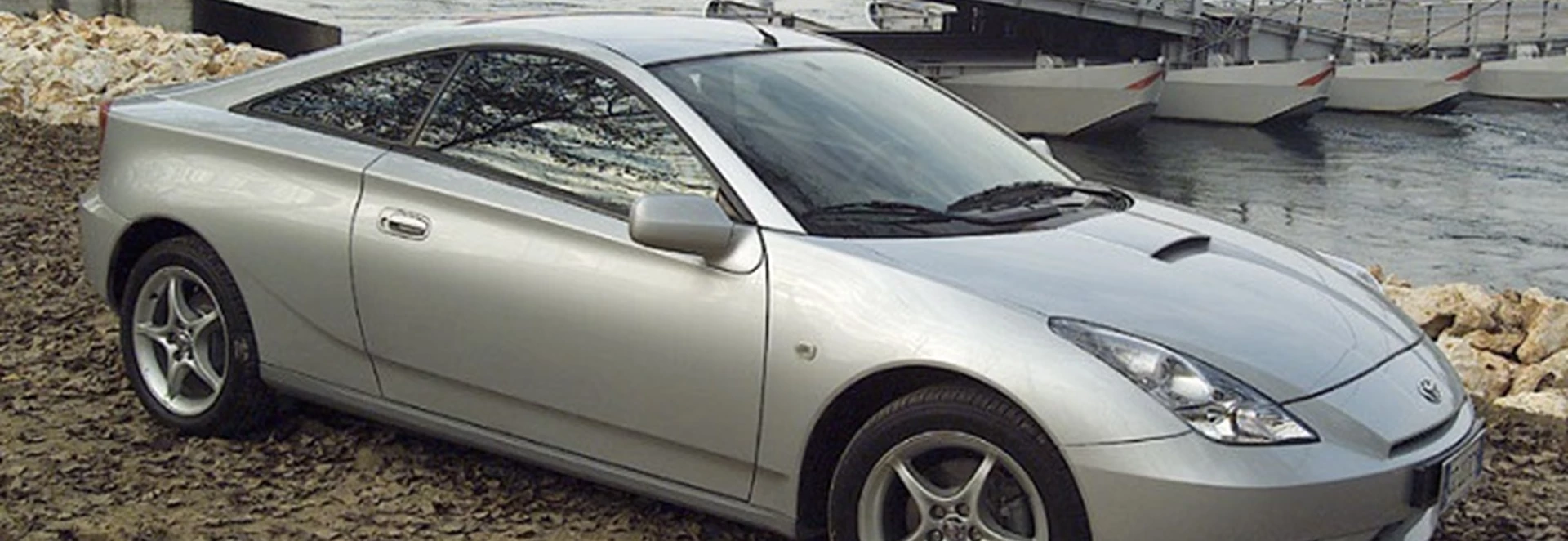I did not choose to live where I do for this reason - at least not consciously - but the fact is that my little part of the world is absolutely heaving with superb roads. A simple trip to the shops requires me to negotiate nearly ten miles of fast corners, slow corners, hairpins, chicanes, dips, crests and flat straights before turning round and doing the same thing in reverse (perhaps more cautiously this time in case the milk falls out of the bag).
All this being the case, I can easily see myself as the owner of a Celica. If I lived in the city I wouldn't necessarily hold the same view, but with a road network like the one I travel on every day I reckon the Celica would suit me down to the ground.
In some respects I wish Toyota had done things differently. Three years after its launch the Celica still doesn't strike me as having an elegant design. If you catch it at the right angle, it does indeed look the part, but to my mind a sports car's shape should suggest forward motion and high levels of grip even when it is standing still. There is nothing about, for example, the area around the rear wheels which tells me that I can expect the tyres to stick to the road under serious cornering conditions, even though they actually do.
There's also a sense of cheapness, as if building the Celica down to a price had been one of the major objectives. It doesn't feel especially solid, and the test car had already developed a repertoire of squeaks and rattles that seemed inappropriate given that it had only about 5000 miles on the clock.
There are four seats, but the ones in the back have so little space around them that the Celica can't possibly be taken seriously as a means of transporting four people of teenage years or above. And although there is much more room in the front, the low roofline means that anyone over six feet tall has to drive with their neck slightly cramped. Nor was I particularly impressed that, in a car with obvious sporting pretensions, the steering wheel is not adjustable for reach.
I still want one, though. The way this car handles answers almost every other criticism I can throw at it.
"Handles" rather than "performs". The Celica isn't really very quick. Not in a straight line, anyway. Unless you go for the much more powerful T Sport option, you're stuck with a 1.8-litre engine which, despite variable valve timing, produces a modest 140bhp. The disparity in output between the two engine options isn't just a matter of ECU and/or camshaft trickery - the 140bhp unit has a much longer stroke and narrower bore than the one in the T Sport, so it's not disposed towards high revs, and in fact I only occasionally pushed it beyond 4000rpm even when I was having fun.
The lack of power might be seen as a disadvantage, but I'm perfectly happy about it for two reasons. First, the engine is mated to a six-speed gearbox, and although I could give you a long list of cars in which six gears were completely unnecessary, I wouldn't include the Celica. There's something rather satisfying about being able to specify exactly the right ratio for a corner in a car which wouldn't react nearly as well if you picked slightly the wrong one.
More importantly, the Celica's handling exactly matches what the engine can do. Like all the best sporty road cars, its suspension is soft but well-damped. It turns in sharply to corners - not too sharply, though - and as you cross the apex the back end is following the front nicely, leaving understeer as a distant memory of something that happened in other, inferior machines.
To achieve this in a front-wheel drive car, Toyota must have limited the amount of grip at the rear, but it has been done with considerable subtlety. Similarly responsive cars of the same basic layout come to mind, but they frequently have rock-solid back ends which destroy any vestige of decent ride quality, which is not the case with the Celica.
A more powerful Celica sounds like a nice idea, but I liked the overall balance of the 140bhp car, and I never once felt that I could have gone usefully quicker if there had been more oomph available. When I returned this car (with considerable regret) I felt it had backed up my theory that a really sporty road-going machine needs a well-sorted chassis far more than it needs a powerful engine.
I should say here that I know several people who think this theory is a complete pile of rancid tortoise droppings. But there aren't many good roads round where they live.
Second opinion: I wish the Celica had more coherent styling, but there's no point in continuing to get huffed about the fact that adjacent body panels seem to have been designed by people who never even met up for morning coffee. Owners obviously don't mind, and I have to admit that the rear spoiler on our 2003 Style model quite looked the part. Yes, it's all a matter of poise and balance, a well-tuned chassis not being overwhelmed by more power than it can handle, and a six-speed box which really has some point to it. I still tend to keep my eyes averted when walking towards the Celica, but out on the open road it's a different matter altogether. This is one of the best-driving cars in its class: not a round-the-bypass racer, but one for "real" roads, responding very accurately to a light touch on the controls, and maintaining a better ride quality than most of its rivals. Ross Finlay.




